Cardiff Castle animal wall comes alive in children's book
- Published
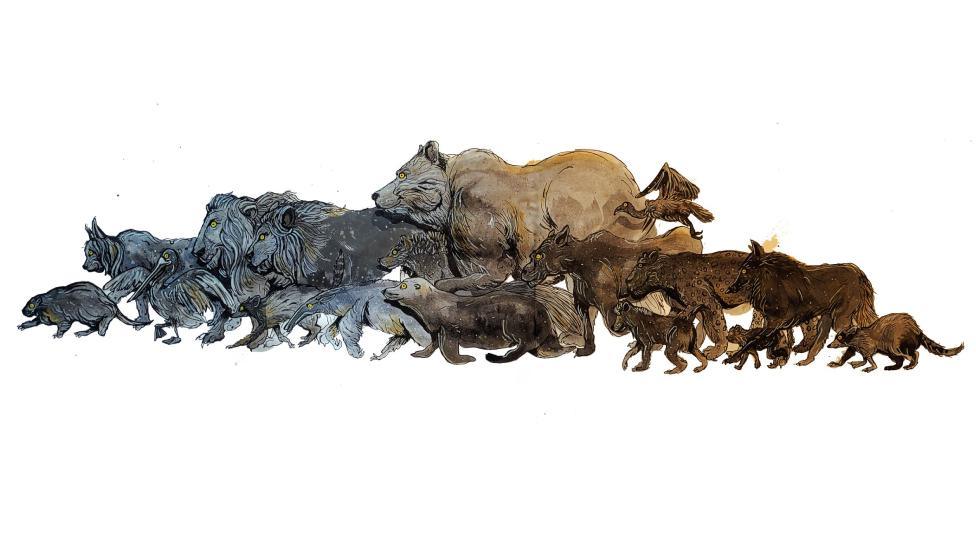
Children's book Night of the Animal Wall sees animal sculptures come alive and explore the empty streets of Cardiff at night
What would the stone animals perched on Cardiff Castle's wall get up to if they could come alive and enjoy the city at night?
Illustrator Jack Skivens' first children's book sees the creatures visiting some of the city's best-known landmarks before returning to their positions before sunrise.
In Night of the Animal Wall, external, the vulture sits on the old Brains brewery tower waiting for passers-by to drops chips on Caroline Street, fondly known as Chippy Alley.
The anteater and bear stop for a game of chess at the city's pedestrianised shopping area, The Hayes.

Cardiff Castle's animal wall has been delighting adults and children alike since it was installed in 1890
The lions have a bathe in Alexandra Gardens while the leopard spends the evening racing trains at Central Station.
Jack, 35, said the book was inspired by both his own childhood memories of visiting the 130-year-old statues and the questions of his curious four-year-old twins.
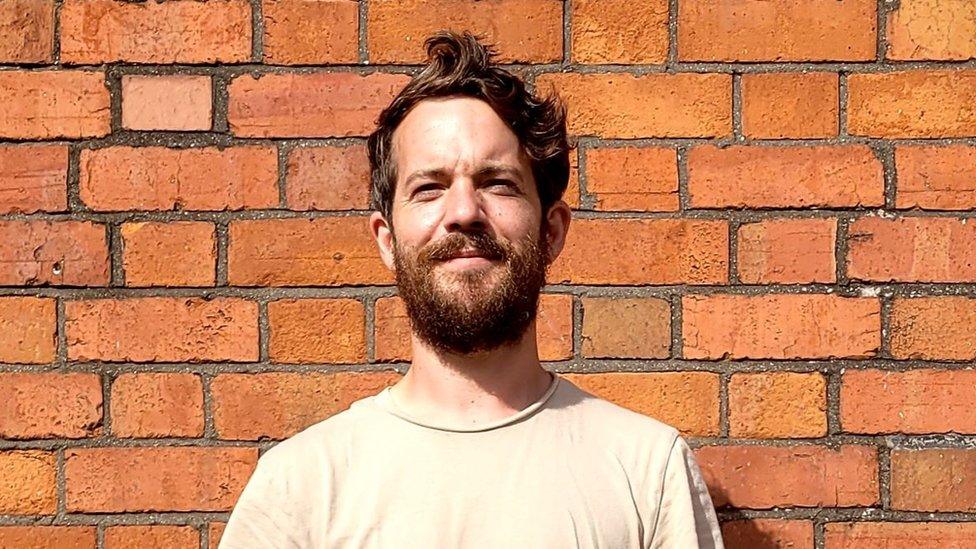
Jack Skivens has cherished memories of the wall from his childhood
"It was always really special and really big and exciting to go to Cardiff," said Jack, who grew up in nearby Caerphilly and now lives a few miles away in Pontypridd.

The beaver pays a visit to Cardiff Bay barrage, which was built during the 1990s, long after the animal wall
"The animals on the wall always took my interest, there was always this eeriness about them - it's just such a strange collection of animals."
He found himself wondering if the animals could be more than mere statues.
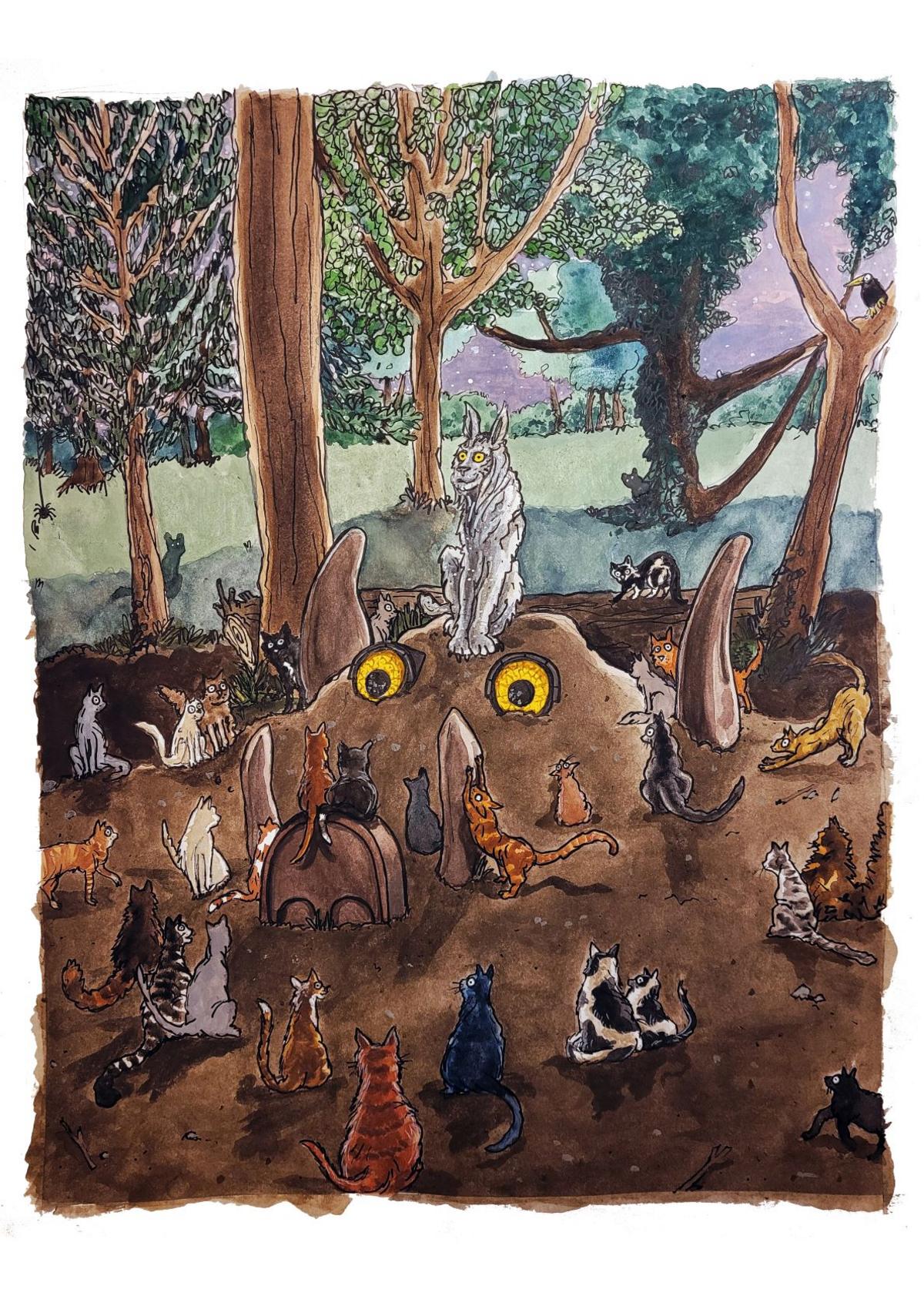
The lynx visits Bute Park, the city centre's green space behind the castle
"I had ideas when I was younger about them coming to life, I had a really active imagination," he said.
"It was kind of a nice place for your mind to wander off to, thinking about those animals wandering around and kind of what they would do."

The anteater and bear have a game of chess on The Hayes, in the heart of Cardiff's shopping centre
During the Covid pandemic lockdowns he began illustrating the stone animals.
"The idea was nature was thriving in our absence without cars and what-have-you and were able to explore new territory," he said.
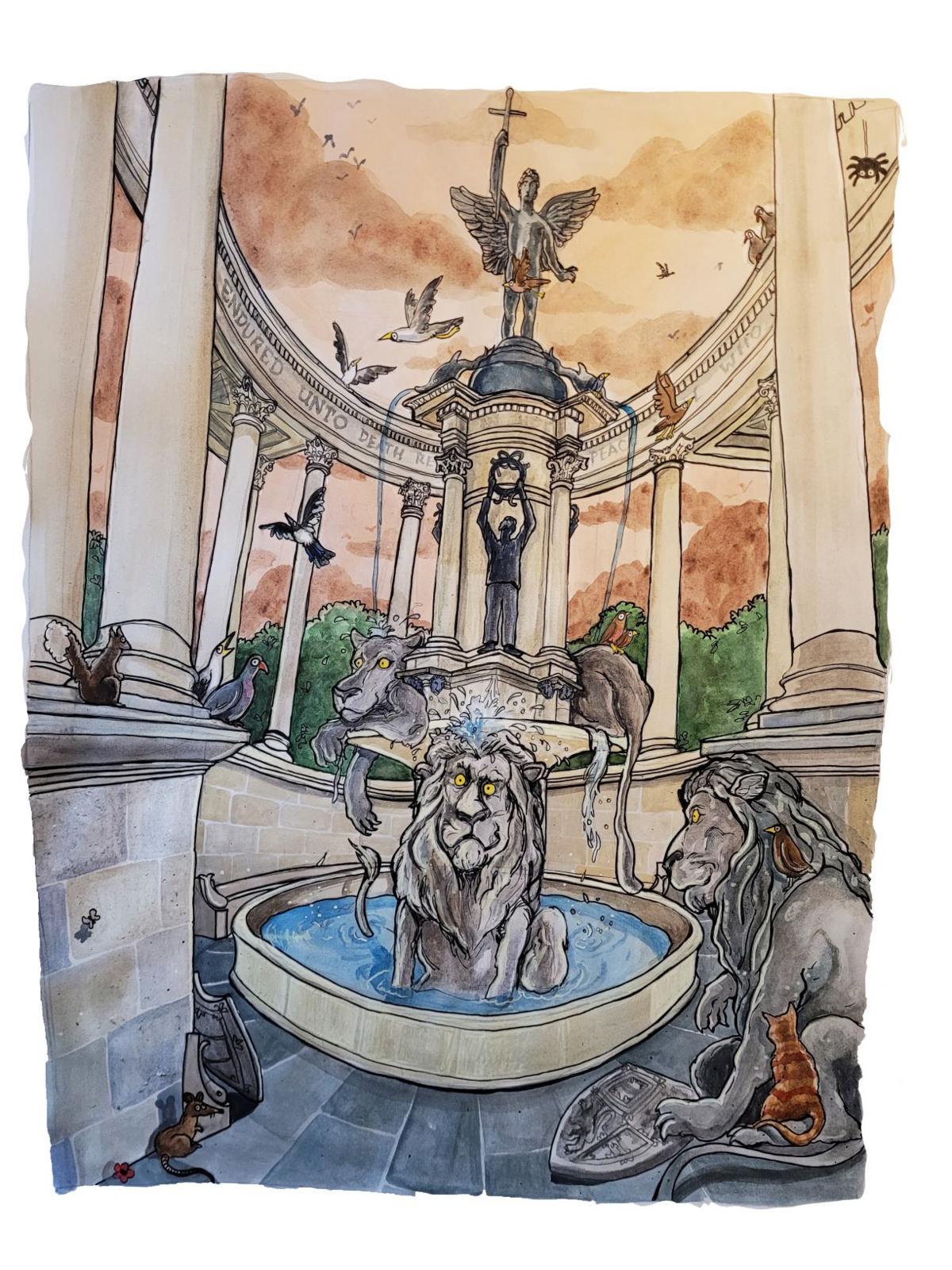
The lions take a wash in Alexander Gardens, in the civic centre
He also spent time during lockdowns out exploring with his children.
"It was looking at them and the way that they see things and imagine that pushed me again to [write the book]," he said.

Baboons and raccoons share jokes at the castle's clock
The book will be released on 29 October, and a city-wide animal art trail based on his story is planned for the October half-term.
Funded by the City Ambition Fund, external, the free event will see families invited to go on an adventure across Cardiff to find the animals who have escaped from the pages of Jack's tale.
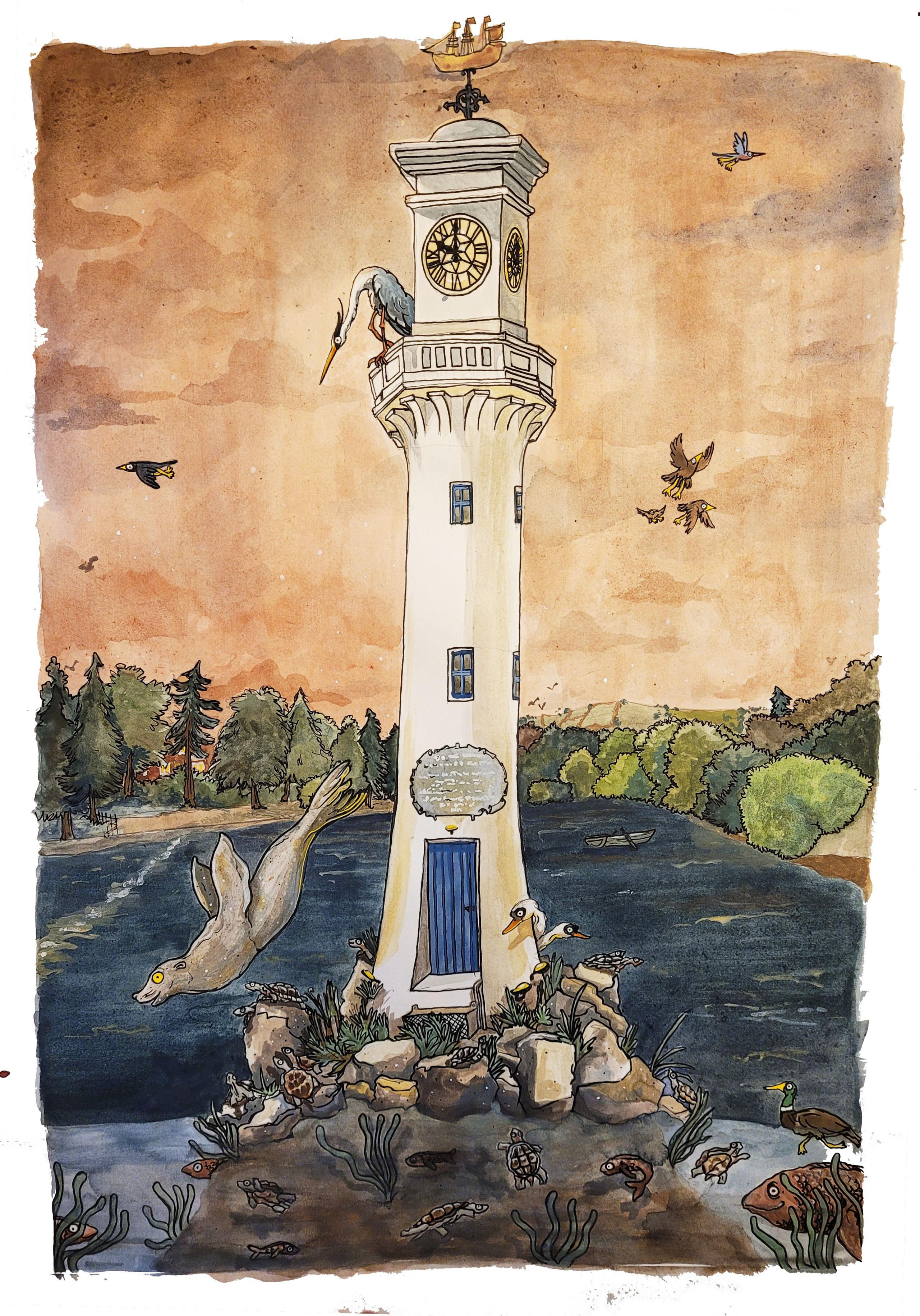
The seal pays a visit to Roath Park, a few miles outside the city centre
Jack will also be hosting a series of children's book readings.
He said he had enjoyed showing his own children the landmarks depicted in his book.
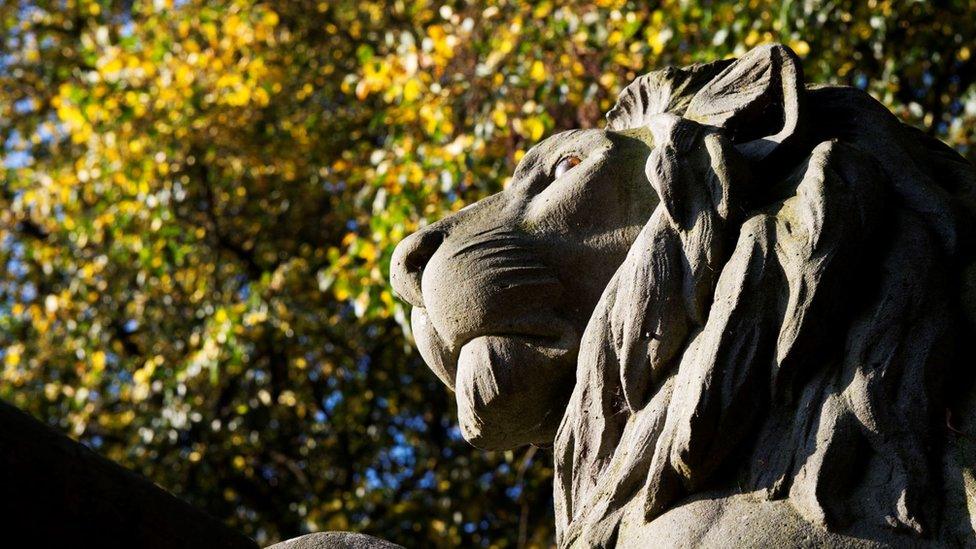
The creatures were designed by architect William Burges and carved after his death by Thomas Nicholls
"They're really excited for it, there's that experience of taking them to these places and they're actually real, watching their minds and seeing the questions they have afterwards has been really, really fun," he said.

The animal wall stands to the west of the entrance to Cardiff Castle
What's the history behind the castle's animal wall?
Cardiff Castle's animal wall has been delighting adults and children alike since it was installed in 1890.
Thomas Nicholls began carving the animals in the late 1880s, based on sketches by architect William Burges, who was employed by the 3rd Marquess of Bute, external.
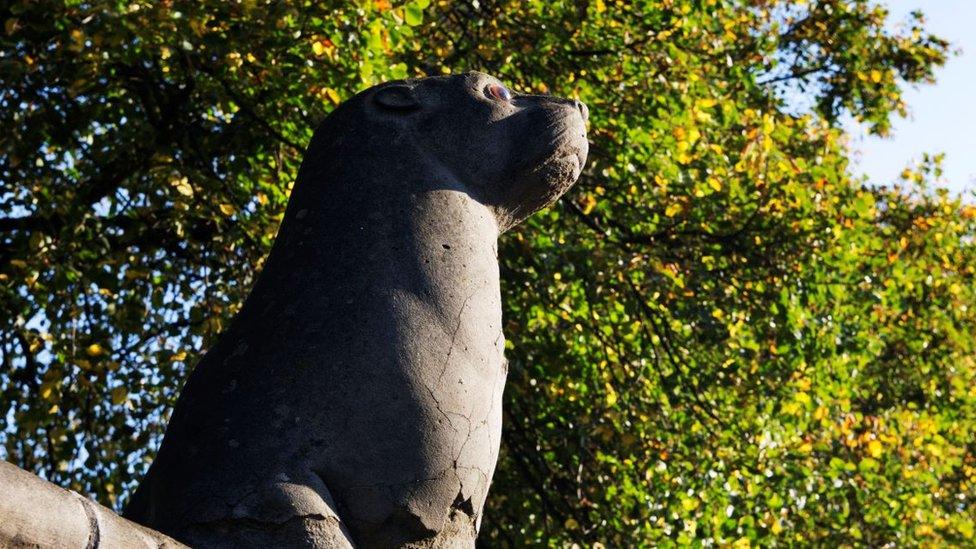
Thomas Nicholls began carving the animals in the late 1880s
There were originally eight animals on the wall - a pair of lions holding shields, a lioness, a polar bear, a sea lion, a wolf, an ape and a hyena, and it was situated directly in front of the castle.
In the 1920s the wall was moved to its present position west of the castle after road widening on Castle Street, and a further seven animals by sculptor Alexander Carrick were added - the lynx, vulture, beaver, leopard, raccoon, pelican and anteater. The polar bear was also replaced by a bear.
Night of the Animal Wall art and sculpture trail will run in Cardiff from 29 October until 4 November as part of FOR Cardiff's City of Arcades week.
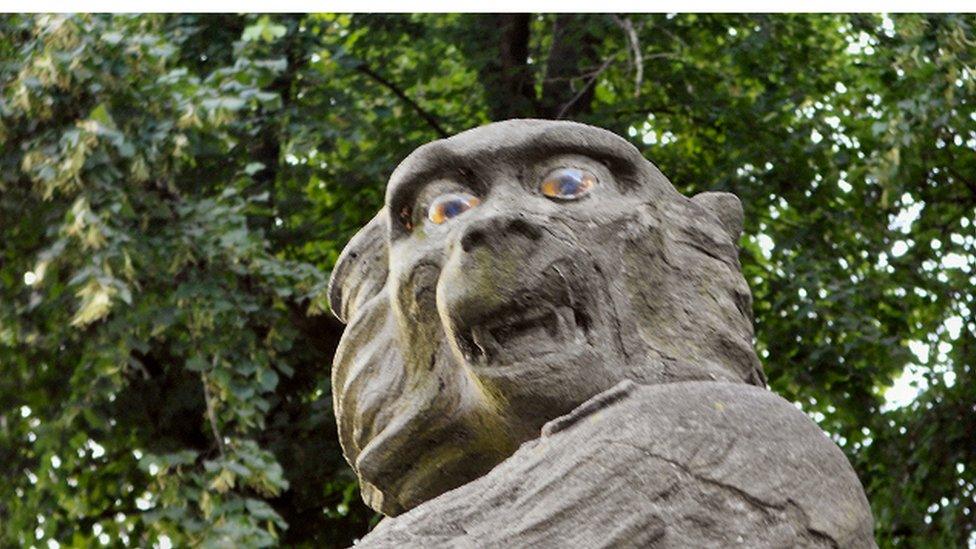
The earlier animal sculptures can be distinguished by their distinctive glass eyes

SIGNED, SEALED AND DELIVERED: Those who write, deliver and look forward to receiving letters
CURL UP WITH A GOOD BOOK: Aberystwyth book club members review their latest read

- Published10 April 2022

- Published28 October 2021

- Published5 June 2022
